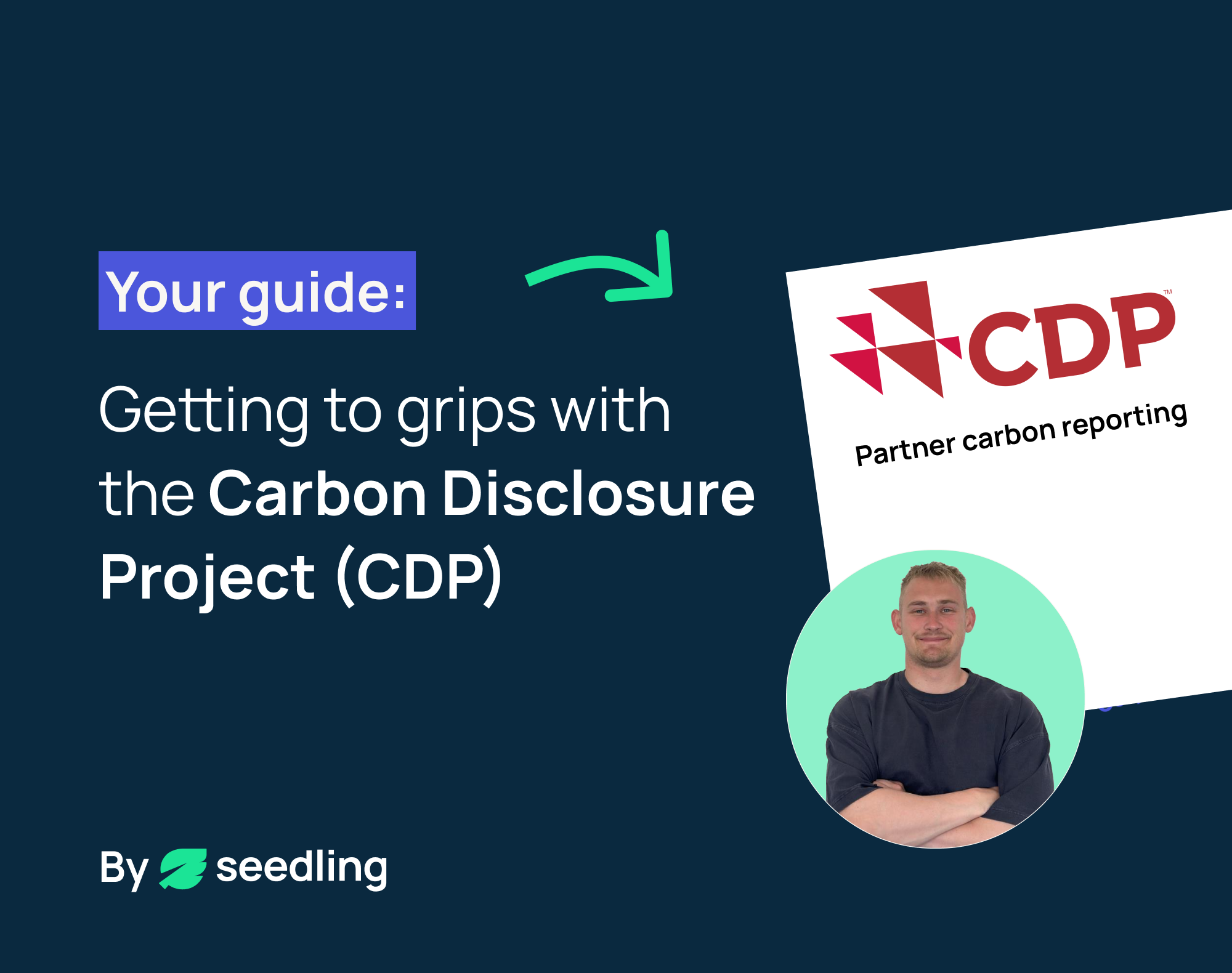Understanding CDP Submission and Verification: A Primer for SMEs

CDP for SMEs in 2025: what to disclose, how to submit, and how scoring works
CDP runs the world’s most widely used environmental disclosure system for companies, cities and regions. It’s voluntary, but heavily valued by customers, lenders and investors who request data through the CDP Portal and use your score to gauge progress.
For SMEs, 2025 is about clarity and stability. CDP kept the SME questionnaire familiar and focused on climate, with only minor wording tweaks to improve usability. If you disclosed last year, you won’t be relearning the process - you’ll be improving the quality and completeness of your data.
What SMEs are asked to disclose in 2025
The SME questionnaire is streamlined, climate-centric and scored only for climate. You’ll still see some integrated datapoints that build awareness of forests and water, but those aren’t scored for SMEs. Expect eight modules covering identification and management of climate risks and opportunities, governance, strategy, transition planning, and environmental performance.
For environmental performance, you’ll disclose your emissions inventory, including:
- Scope 1
- Scope 2
- Relevant Scope 3
Governance and strategy matter. CDP asks who is accountable for climate, whether the board and management have defined responsibilities and incentives, and how climate issues influence business plans and financial decisions. Where relevant, it asks whether you have a climate transition plan and how it is overseen.
The SME scoring methodology sets out how points are awarded per table and per row, keeping the focus on complete, consistent figures and explanations.
Data quality and verification - what’s required vs what earns points
There’s a lot of confusion online about “mandatory” assurance. For SMEs in 2025, third-party verification is not mandatory across the board. You will state the verification status of your Scope 1, Scope 2 and, where applicable, Scope 3 figures. You can earn points for having third-party verification in place, but the SME scoring does not set a blanket percentage coverage requirement.
Those stricter thresholds you may have heard about apply to the full corporate questionnaire at higher scoring levels. Under CDP’s 2025 Essential Criteria for the full corporate questionnaire, Leadership level requires third-party verification of Scope 1 and Scope 2 covering at least 95% of reported emissions, and A List requires 100% coverage for Scopes 1 and 2, with verification of at least one Scope 3 category. These Essential Criteria do not apply to the SME questionnaire.
How to submit in 2025
Everything runs through the CDP Portal. You complete structured multiple-choice items, narrative fields and numerical tables online. You can invite teammates - and external advisors if you use them - as “Discloser Contributors” to collaborate directly in your Portal workspace. An Excel import feature is available for selected long tables, and you’ll see optional places to attach supporting documents where relevant.
If you disclosed previously, expect a smoother start. CDP has emphasised Portal stability and minimal changes this year, and many disclosers reuse prior-year narratives and data via the Portal’s data migration features - just sanity-check for any updates before resubmitting. (Copy-forward has historically been supported; some partners note carry-over tools in 2025.)
How CDP aligns with other frameworks
CDP’s climate questions remain aligned with the ISSB’s IFRS S2 standard. In parallel, CDP and EFRAG published a 2025 correspondence mapping that shows how CDP questions relate to the EU’s ESRS E1 climate disclosures - helpful if you’re also preparing for CSRD.
A short look back: what changed from 2024
For context, 2024 introduced CDP’s integrated corporate questionnaire across climate, forests and water, kept separate scores for each, and added non-scored plastics and biodiversity modules. In 2025, that structure stays in place; plastics and biodiversity remain unscored, and the SME questionnaire continues to focus on climate. The headline is stability, not overhaul.
Takeaway for SMEs
Prioritise completeness and consistency of your climate data, be transparent about methods and boundaries, and document how climate is governed and embedded in strategy. Add independent verification when you’re ready - it strengthens credibility and earns points, even if it isn’t blanket-mandatory for SMEs in 2025.
How Seedling can help
We've helped 250+ businesses to accurately measure and report carbon data, and many submit full scope emissions via the CDP. With Seedling, you have the confidence that your data has been checked by an expert, and our streamlined process - with time saving tools like accounting software integrations and our employee survey - makes measurement and disclosure starightforward for busy teams.
To chat to us, you can book a demo, or leave us a message here. We'd love to hear from you.
Start Measuring Your Carbon Footprint Free Today
Free forever. No Credit Card required.
Benchmark your business’s climate action for free

Chat to an expert

Measure a full-scope footprint, reduce emissions, and share your Net Zero strategy.

.png)


.svg)


